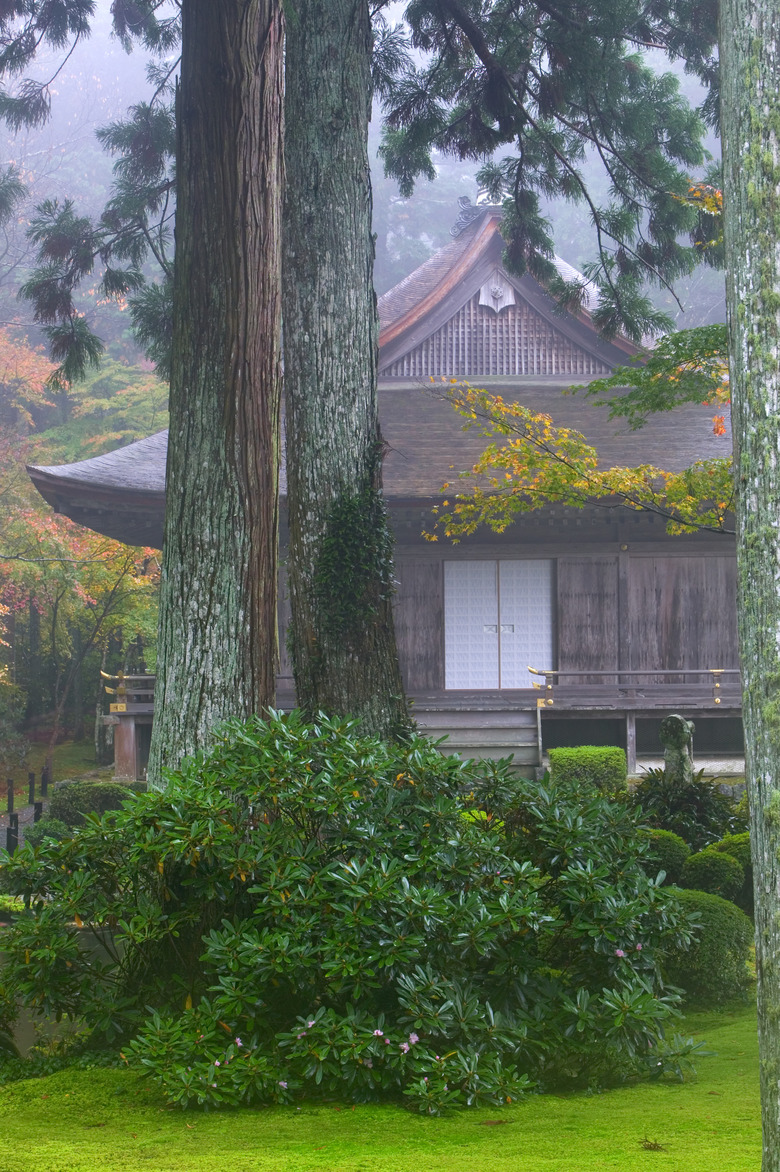Which Organelles Would Be Found Within A Cell That Was Both Eukaryotic And Autotrophic?
Unlike animals, plants do not need to consume other organisms to obtain energy. Plants have the ability to make their own food using light, water and carbon dioxide.
Some single-celled organisms also make their own food because they have the same cellular structures that allow plants to carry out photosynthesis.
TL;DR (Too Long; Didn't Read)
Eukaryotic autotrophs such as plants and algae have chloroplasts to carry out photosynthesis.
Divisions of Life
Divisions of Life
All organisms can be classified into two major groups: eukaryotes and prokaryotes. Plants, animals, fungi and protists are **eukaryotes** and share the same basic cellular structure. These cells share many of the same organelles which carry out similar functions. They have membrane-bound organelles and many eukaryotes form complex, multicellular tissues.
Bacteria and Archaea are **prokaryotes**. They are all single-celled organisms that have smaller cells, a simpler design and fewer organelles than eukaryotes. Their organelles are not contained within membranes and their genetic material is not held within a nucleus.
Eukaryotic Autotrophs: Plants and Protists
Eukaryotic
Autotrophs: Plants and Protists
There are two basic types of living things: organisms that obtain energy by producing their own food and organisms that obtain energy by consuming other materials. Animals and fungi are **heterotrophs**; they consume other organisms or organic material to provide them with the energy they need. Some bacteria, archaea and protists are also heterotrophs.
Plants are called autotrophs because they make their own food. Plants use water, carbon dioxide and energy from the sun to produce glucose through the process of photosynthesis. Some types of protists also obtain energy through photosynthesis.
Plant-like Protists
Plant-like Protists
Photosynthesizing protists are single-celled organisms, but many of them grow together in colonies to form plant-like structures. They live in fresh water or saltwater. Green algae of are a well-known group of autotrophic protists.
Other types of protists that use photosynthesis include:
- Dinoflagellates
- Diatoms
- Euglena
- Brown algae, such as kelp
- Red algae
Eukaryotic Organelles in Autotrophs
Eukaryotic
Organelles in Autotrophs
All eukaryotic cells share many of the same organelles that are used to carry out functions within the cell such as energy storage, protein synthesis and transport of molecules.
Organelles unique to autotrophs include chloroplasts, cell walls and a large central vacuole that provides storage and structure.
Harvesting Light Energy
Harvesting Light Energy
Photosynthesizing organisms have organelles that collect light energy and convert it into chemical energy. Autotrophic prokaryotes carry out photosynthesis inside the thylakoid membrane. In eukaryotic autotrophs, photosynthesis occurs in organelles called chloroplasts.
Chloroplasts are the site of photosynthesis and contain the pigment chlorophyll that absorbs light energy from the sun and converts it to electrons. Chlorophyll gives photosynthesizing organisms their green color.
A series of reactions occur to produce a molecule known as ATP, which powers the formation of glucose. Plants and photosynthetic protists use the glucose they make for growth, repair and reproduction.
Structure and Storage
Structure and Storage
A rigid cell wall made of cellulose gives plant and plant-like protist cells support and helps to regulate the movement of molecules into and out of the cells. It maintains pressure within the cell when osmotic pressure exerts force from outside the cell.
The **central vacuole** stores molecules needed for growth and can take in or expel water as needed in response to environmental conditions.
The Theory of Endosymbiosis
The Theory of Endosymbiosis
The theory of endosymbiosis states that some eukaryotic organelles evolved from bacteria. Chloroplasts in eukaryotic cells may have arisen from ancient photosynthesizing bacteria.
Mitochondria may have evolved from bacterial cells that were consumed by eukaryotic cells or acted as parasites within eukaryotic hosts. The membranes surrounding eukaryotic organelles resemble and function like the membraned that enclose prokaryotic cells.
Cite This Article
MLA
Mentzer, A.P.. "Which Organelles Would Be Found Within A Cell That Was Both Eukaryotic And Autotrophic?" sciencing.com, https://www.sciencing.com/organelles-would-found-within-cell-eukaryotic-autotrophic-15834/. 20 May 2019.
APA
Mentzer, A.P.. (2019, May 20). Which Organelles Would Be Found Within A Cell That Was Both Eukaryotic And Autotrophic?. sciencing.com. Retrieved from https://www.sciencing.com/organelles-would-found-within-cell-eukaryotic-autotrophic-15834/
Chicago
Mentzer, A.P.. Which Organelles Would Be Found Within A Cell That Was Both Eukaryotic And Autotrophic? last modified March 24, 2022. https://www.sciencing.com/organelles-would-found-within-cell-eukaryotic-autotrophic-15834/
